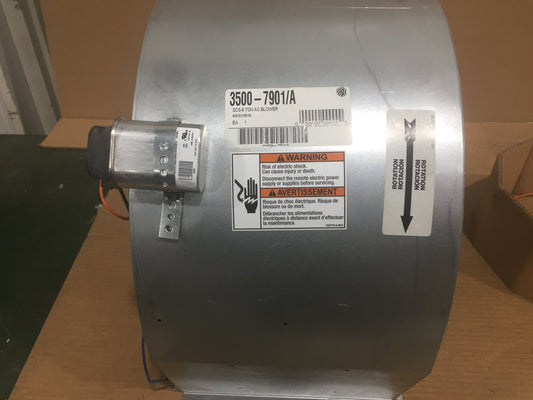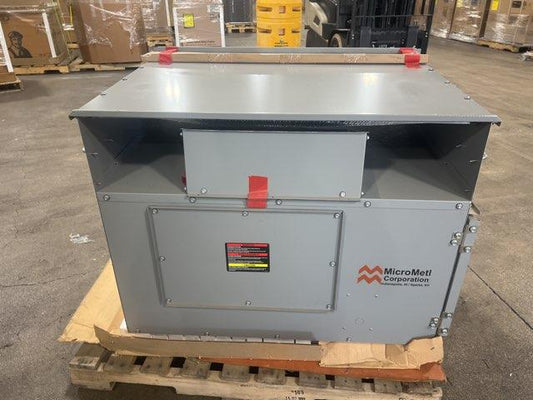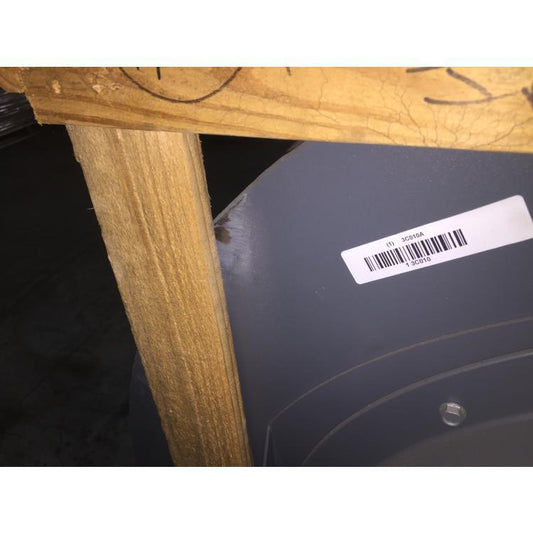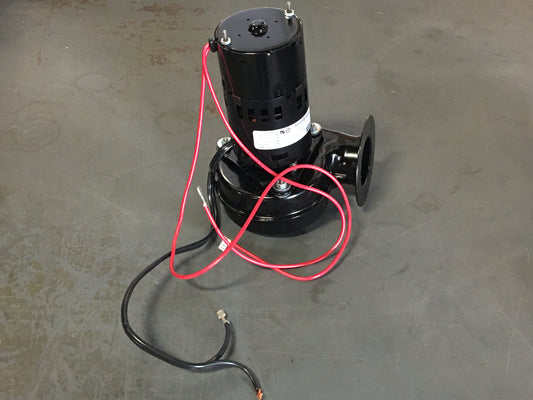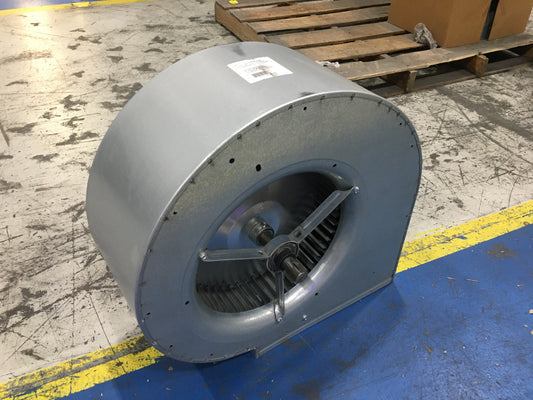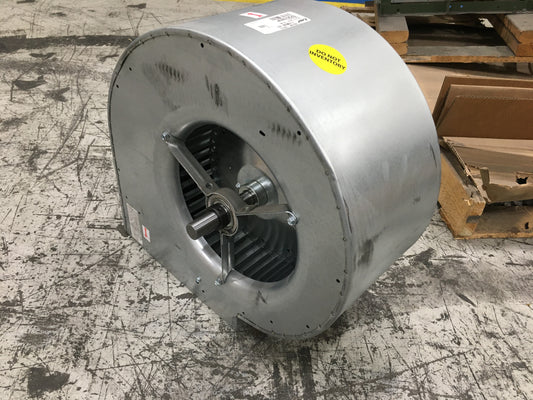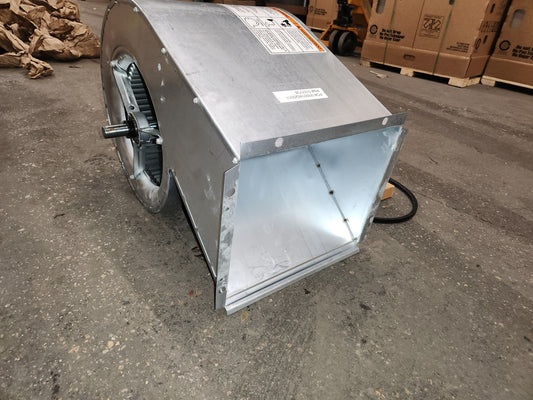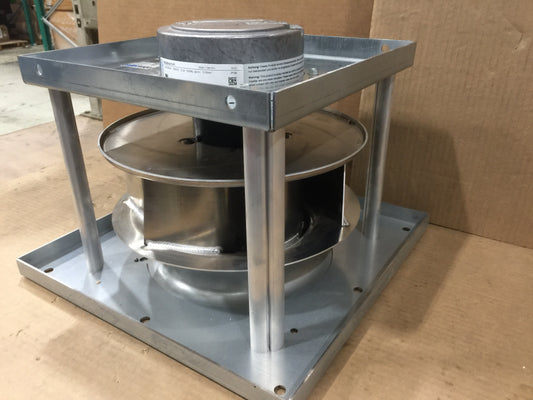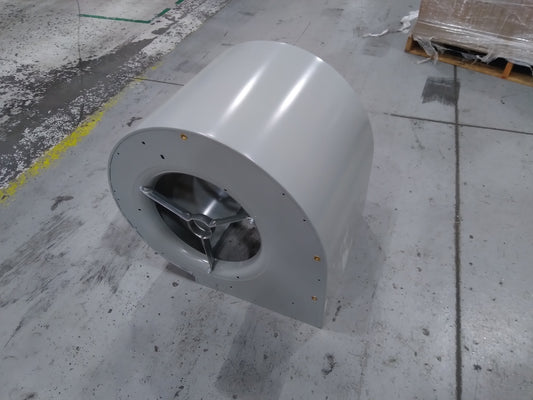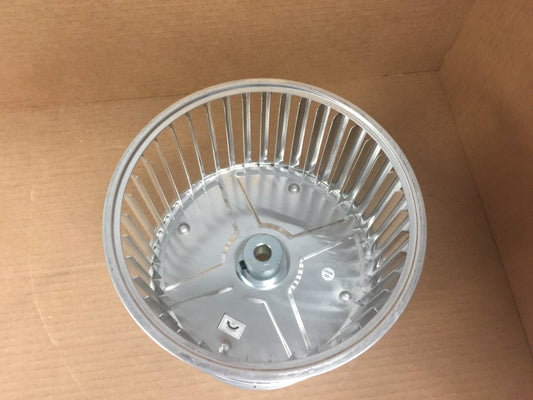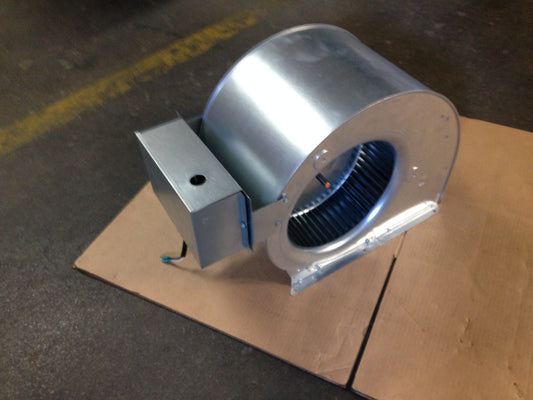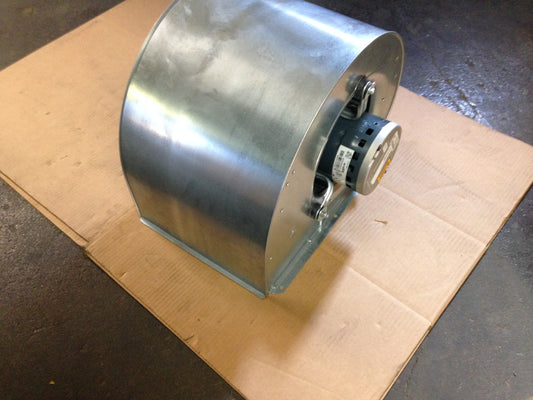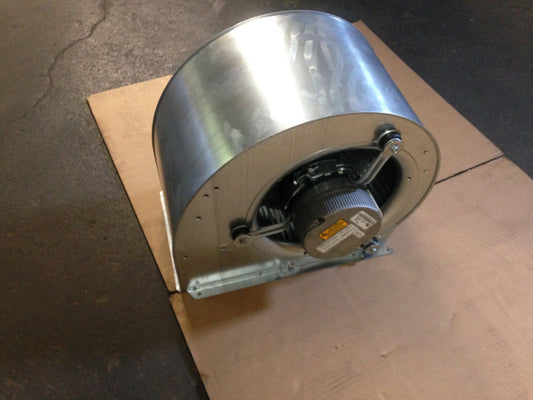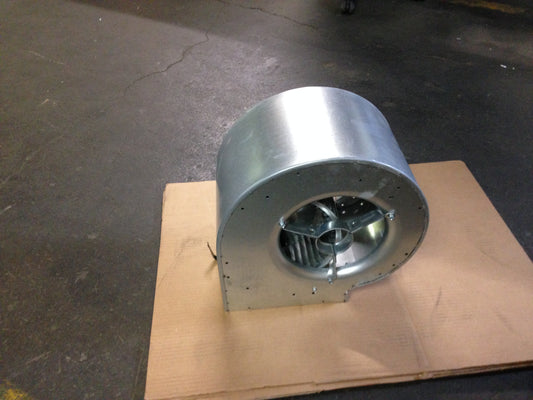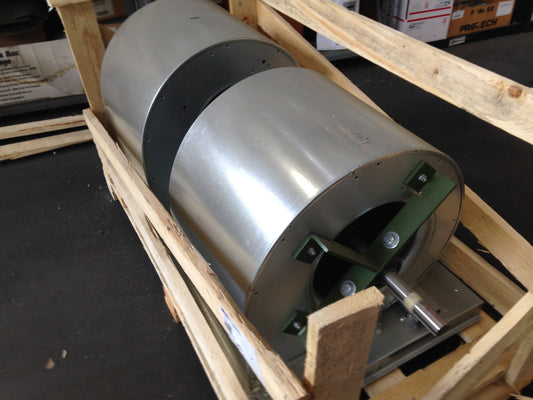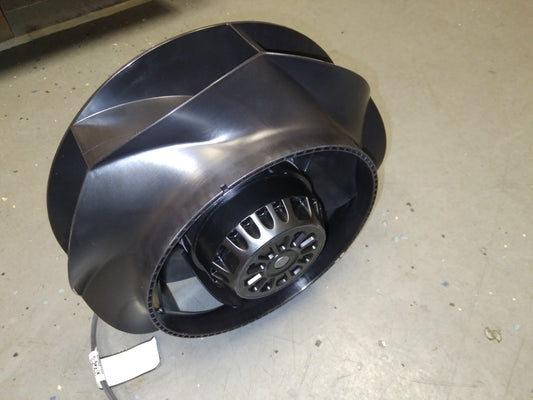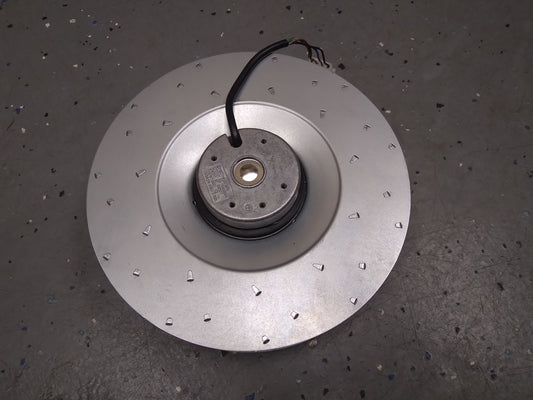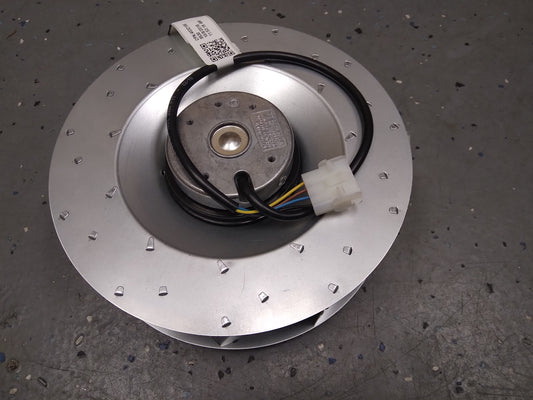Blowers
-
Vendor: coleman
5 Ton Blower Assembly, 240 Volt, 3/4 Hp, 4 Speed
SCL # : 194600 Available: 6Shop NowRegular price $250.00Regular priceUnit price / per -
Vendor: micrometl
Modulating Centrifugal Power Exhaust, 460/60/3
SCL # : 219768 Available: 1Shop NowRegular price $1,350.00Regular priceUnit price / per -
Vendor: dayton
22-1/4 Belt Driven Backward Incline Utility Exhaust Blower/Less Drive Package"
SCL # : 195547-DAMAGED Available: 1Shop NowRegular price $1,100.00Regular priceUnit price / per -
Vendor: dayton
Blower, Wheel DIA 20 In, Less Drive Package
SCL # : 187420-DAMAGED Available: 2Shop NowRegular price $999.99Regular priceUnit price / per -
Vendor: dayton
24-1/2 Blower Less Drive Package "
SCL # : 178029-DAMAGED Available: 1Shop NowRegular price $2,061.99Regular priceUnit price / per -
Vendor: dayton
Single Inlet Backward Incline Belt Drive Blower, Less Belt Package
SCL # : 153622-DAMAGED Available: 1Shop NowRegular price $2,695.99Regular priceUnit price / per -
Vendor: mortex
3/4 HP 5 Ton PSC Accessory Blower
SCL # : 217943 Available: 3Shop NowRegular price $85.05Regular priceUnit price / per$90.00Sale price $85.05Sale -
Vendor: revcor
4-1/4H x 6-1/2"W Clockwise Blower Housing Assembly/Less Motor"
SCL # : 192467 Available: 1Shop NowRegular price $70.88Regular priceUnit price / per$75.00Sale price $70.88Sale -
Vendor: fasco
1/60 HP Centrifugal Blower 230/60/1 3000 RPM 1 Speed
SCL # : 217366 Available: 1Shop NowRegular price $84.11Regular priceUnit price / per$89.00Sale price $84.11Sale -
Vendor: lau
Blower Housing with Wheel and Shaft
SCL # : 213620 Available: 2Shop NowRegular price $137.03Regular priceUnit price / per$145.00Sale price $137.03Sale -
Vendor: lau
Blower Housing and Wheel 1" Bore
SCL # : 213478 Available: 3Shop NowRegular price $191.84Regular priceUnit price / per$203.00Sale price $191.84Sale -
Vendor: york international
3 Ton Standard Belt Drive Blower Kit
SCL # : 211959 Available: 1Shop NowRegular price $401.63Regular priceUnit price / per$425.00Sale price $401.63Sale -
Vendor: ebm-papst
Fan; Motorized Impeller, EBM 280, 1kW, 240V
SCL # : 211812 Available: 2Shop NowRegular price $1,984.50Regular priceUnit price / per$2,100.00Sale price $1,984.50Sale -
Vendor: trane
16" X 18" Blower Housing Less Wheel
SCL # : 210741 Available: 6Shop NowRegular price $107.73Regular priceUnit price / per$114.00Sale price $107.73Sale -
Vendor: ukkarit rungrueng
Aluminum Blower Wheel, 7" X 9"
SCL # : 208465 Available: 5Shop NowRegular price $14.00Regular priceUnit price / per$0.00Sale price $14.00 -
Vendor: nortek
Replacement Blower, M7T, 1/2, 11" X 8"
SCL # : 208091 Available: 4Shop NowRegular price $180.00Regular priceUnit price / per$0.00Sale price $180.00 -
Vendor: nortek
Blower, R4, 10" X 10" X 13", 3/4 HP, 208-230/60-50/1
SCL # : 207559 Available: 3Shop NowRegular price $273.00Regular priceUnit price / per$0.00Sale price $273.00 -
Vendor: nortek
1/2 HP Blower Motor Assembly, 120-240/50-60/1
SCL # : 207491 Available: 1Shop NowRegular price $311.00Regular priceUnit price / per$0.00Sale price $311.00 -
Vendor: reznor
Blower Wheel and Housing Assembly 15"H x 9 1/4"W x 18 1/4"L
SCL # : 207436 Available: 5Shop NowRegular price $160.00Regular priceUnit price / per$0.00Sale price $160.00 -
Vendor: delhi blowers
Double Wheel Blower Assembly
SCL # : 207418 Available: 3Shop NowRegular price $850.50Regular priceUnit price / per$900.00Sale price $850.50Sale -
Vendor: envirowise
Blower Motor And Wheel 115/60/1 A 42Watt 2300 RPM
SCL # : 207007 Available: 4Shop NowRegular price $272.16Regular priceUnit price / per$288.00Sale price $272.16Sale -
Vendor: envirowise
Blower Motor And Wheel 115/60/1 .48A 50Watt 2400 RPM
SCL # : 206993 Available: 2Shop NowRegular price $162.00Regular priceUnit price / per$0.00Sale price $162.00 -
Vendor: envirowise
Blower Motor and Wheel 115/60/1 .42A 42Watt 2300 RPM
SCL # : 206992 Available: 4Shop NowRegular price $153.09Regular priceUnit price / per$162.00Sale price $153.09Sale
How Do I Tell If My Furnace Blower Motor Is Bad?
Common Symptoms of a Failing Variable Speed Blower Motors
Recognizing the signs of a failing furnace blower motor is crucial for maintaining home comfort and efficiency. Common symptoms include a lack of hot air when your heating system is engaged, which is a telltale sign that the motor is not functioning correctly. Additionally, higher-than-normal energy bills can indicate a struggling motor as it works harder to maintain temperature settings. Issues like overheating or unusual odors can often be traced back to the blower assembly, highlighting the importance of regular maintenance and cleaning.
Strange Noises or Vibrations
Unusual noises or vibrations emanating from your HVAC system are often key indicators of furnace blower motor problems. Grinding, squealing, or rattling sounds can point to worn-out components within the motor, such as bearings or belts, or dust accumulation on the blower wheel, causing unusual noises. Addressing these noises promptly can prevent further damage and expensive repairs.
Reduced Air Flow
If you notice diminished airflow from your vents, it might be due to a failing blower motor. Reduced air circulation can result from a motor that cannot maintain its designated speed, causing uneven heating and increased home energy costs. When the blower motor fails, it affects the circulation of heated or cooled air, leading to discomfort and inefficiency. Monitoring and repairing airflow issues can extend the average life of a furnace blower motor.
Inconsistent Operation
A furnace blower motor that operates sporadically or fails to start is a clear sign of malfunction. This inconsistency can be due to worn-out motor components or electrical issues within the motor. Ensuring consistent operation will enhance your furnace’s performance and reliability.
Consulting experienced HVAC technicians is crucial for diagnosing and fixing these inconsistent operation issues.
How Much Should It Cost To Replace A Furnace Blower Motor?
When you’re faced with a failing furnace blower motor, one of the first questions that comes to mind is the cost of replacement. Understanding the replacement cost is essential to manage your budget effectively and ensure that your home heating system functions optimally. Additionally, selecting the right replacement blower motor is crucial for optimal performance and efficiency.
Factors Affecting Replacement Cost
Several variables influence the cost of furnace blower motor replacement. These include the make and model of your furnace, the type of motor required, and the local market conditions. High-efficiency motors with advanced features, such as variable-speed blower motors, might cost more. Additionally, prices can vary depending on whether you are purchasing online or from a local dealer.
Average Cost Range
On average, furnace blower motor replacement costs range between $400 and $600. This price typically includes both parts and labor. However, this is just a ballpark figure, and actual costs can fluctuate based on the factors mentioned.
Cost of Parts Versus Labor
The cost of parts includes the replacement blower motor itself, which might set you back anywhere from $100 to $300, depending on specifications. Labor costs, on the other hand, generally hover around $150 to $300. It’s essential to get estimates from several contractors to understand the labor component, especially if you’re thinking about searching for a “furnace blower motor near me” to find local services.
Geographical Price Variations
Where you live can also affect the price of a blower motor replacement. In areas with higher demand or a higher cost of living, you might find prices towards the upper end of the range. Conversely, regions with a wealth of HVAC services may offer more competitive pricing.
At Surplus City, we offer quality furnace blower motor replacements that fit any budget. By choosing us, you benefit from a reliable solution that promises peace of mind and ensures that your home remains comfortably warm all winter long.
Is It Worth Replacing A Furnace Blower Motor?
When faced with the question of whether replacing a furnace blower motor is worth the investment, it’s essential to weigh the options between a simple repair and a complete replacement. While a repair might seem like the most cost-effective solution in the short term, sometimes a replacement is the better decision for both performance and efficiency.
The blower motor plays a crucial role in the central heating system by ensuring the warm air is consistently distributed throughout your home. Start by considering the average life of a furnace blower motor, which typically ranges from 10 to 20 years. If your blower motor is nearing the end of its life span or has required multiple repairs recently, it might be time to opt for a new one. Older motors can lead to inefficiencies, impacting both performance and your energy bills, which can add up significantly over time. Investing in a replacement could lead to improved air circulation and more consistent heating or cooling within your home.
Long-term Energy Savings
Furnace blower motor replacement can also contribute to long-term energy savings. Newer models are engineered to be more efficient, using less energy to maintain the desired temperature in your home. This means a new blower motor can reduce your heating and cooling costs while also potentially increasing the overall reliability of your HVAC system.
Assessing the Condition
Assessing both the age and condition of your current blower motor is crucial in this decision. For cost-conscious homeowners, it can be beneficial to consult with a professional HVAC technician to evaluate your system’s performance and provide insights into the potential benefits of a replacement. Overall, a replacement not only helps maintain comfort but can be a financially savvy move in the long run. Regular furnace maintenance is also essential in evaluating the system's performance.
Can I Replace My Furnace Blower Motor Myself?
As a cost-conscious homeowner, replacing a furnace blower motor yourself might be an appealing way to save money on labor costs. However, it’s important to evaluate if you have the necessary tools and skills to safely and effectively carry out the job. The blower motor circulates air over the heat exchanger to warm it before it is pushed through the ductwork, ensuring efficient heating and maintaining air quality.
Necessary Tools and Skills
To embark on a DIY blower motor replacement, you'll need basic hand tools like screwdrivers and pliers, as well as more specialized equipment like a multimeter to test electrical connections. Familiarity with these tools and a basic understanding of your furnace's electrical components is crucial.
Step-by-step Replacement Guide
First, ensure your furnace is completely powered down to prevent any electrical hazards. Locate the blower motor, typically found within the fan housing. Carefully disconnect all electrical wires and unscrew the mounting bolts securing the motor. Replace the old motor with the new unit, ensuring all connections are secure and correctly aligned with the blower.
Safety Precautions
Safety should be your top priority during this DIY project. Always wear safety glasses and gloves to protect against sharp components or electrical hazards. Make sure to double-check all connections to avoid any potential fire risks or malfunctions.
When to Call Experienced HVAC Technicians
If you encounter difficulties or feel uncertain at any point, it's best to call in a professional. Surplus City offers access to a network of licensed technicians who can ensure the job is done safely and correctly. While DIY projects can be rewarding, the complexities of a furnace blower motor replacement may require professional intervention.

